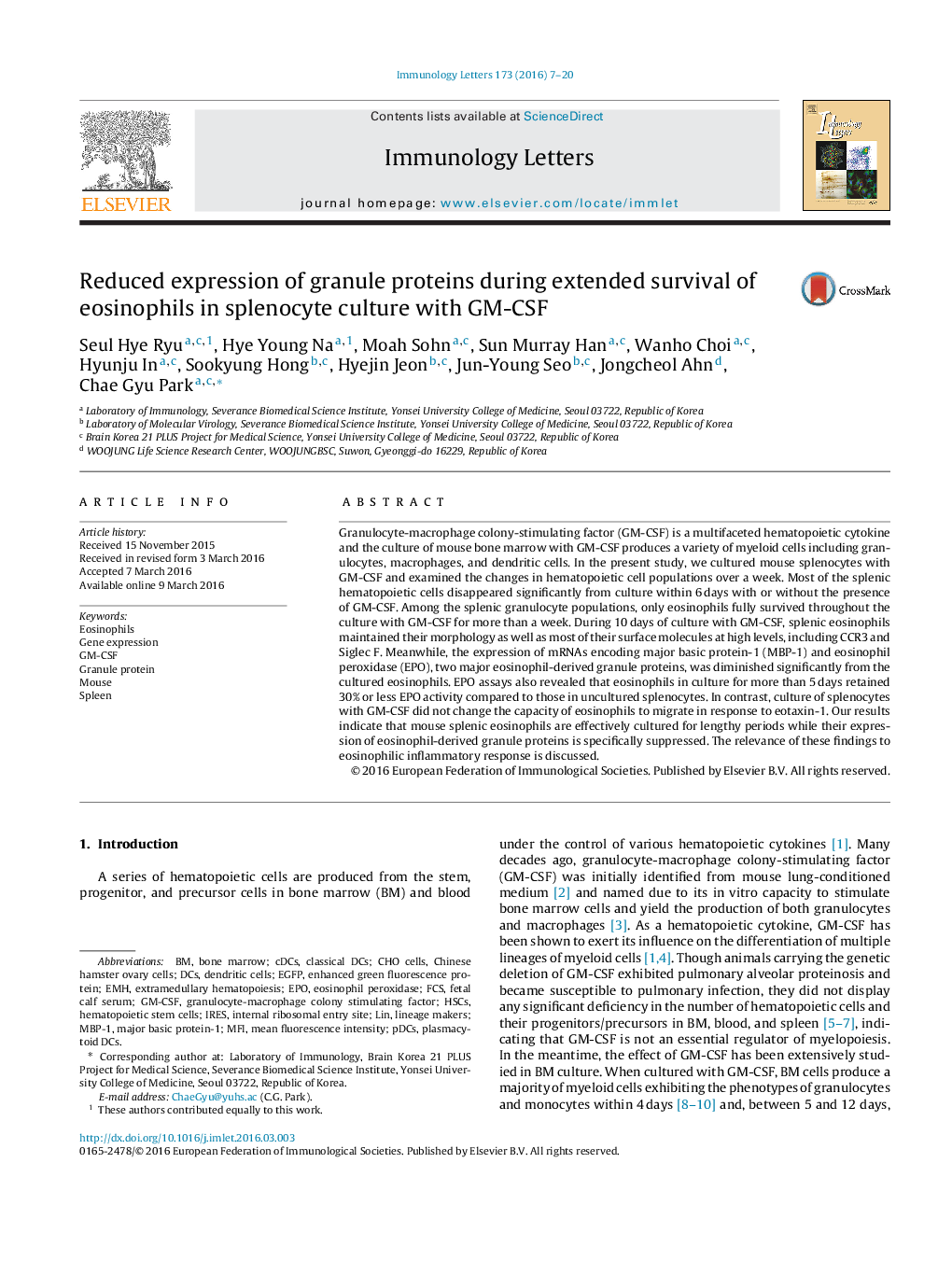| Article ID | Journal | Published Year | Pages | File Type |
|---|---|---|---|---|
| 3355276 | Immunology Letters | 2016 | 14 Pages |
•Survival of eosinophils is conspicuous in mouse splenocyte culture with GM-CSF.•Levels of most surface molecules including CCR3 on eosinophils are unchanged or increased.•Expression of granule proteins in eosinophils is suppressed during the culture.
Granulocyte-macrophage colony-stimulating factor (GM-CSF) is a multifaceted hematopoietic cytokine and the culture of mouse bone marrow with GM-CSF produces a variety of myeloid cells including granulocytes, macrophages, and dendritic cells. In the present study, we cultured mouse splenocytes with GM-CSF and examined the changes in hematopoietic cell populations over a week. Most of the splenic hematopoietic cells disappeared significantly from culture within 6 days with or without the presence of GM-CSF. Among the splenic granulocyte populations, only eosinophils fully survived throughout the culture with GM-CSF for more than a week. During 10 days of culture with GM-CSF, splenic eosinophils maintained their morphology as well as most of their surface molecules at high levels, including CCR3 and Siglec F. Meanwhile, the expression of mRNAs encoding major basic protein-1 (MBP-1) and eosinophil peroxidase (EPO), two major eosinophil-derived granule proteins, was diminished significantly from the cultured eosinophils. EPO assays also revealed that eosinophils in culture for more than 5 days retained 30% or less EPO activity compared to those in uncultured splenocytes. In contrast, culture of splenocytes with GM-CSF did not change the capacity of eosinophils to migrate in response to eotaxin-1. Our results indicate that mouse splenic eosinophils are effectively cultured for lengthy periods while their expression of eosinophil-derived granule proteins is specifically suppressed. The relevance of these findings to eosinophilic inflammatory response is discussed.
